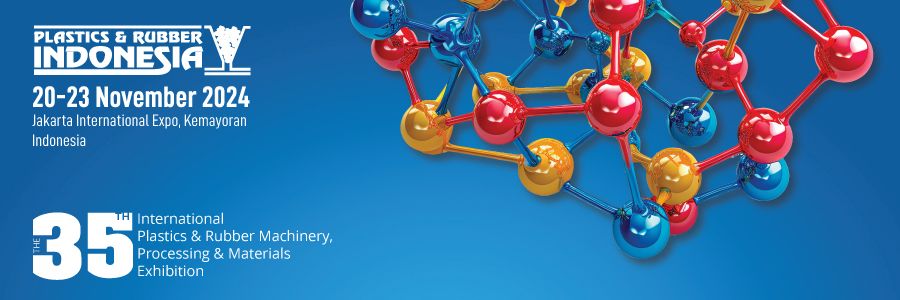Unlocking Precision: How the Newest EVA Injection Molds Revolutionize Manufacturing
Time:
2025-05-21
Unlocking Precision: How the Newest EVA Injection Molds Revolutionize Manufacturing
Table of Contents
- 1. Introduction to EVA Injection Molding
- 2. Understanding EVA Injection Molding Technology
- 3. Key Benefits of EVA Injection Molds
- 4. Diverse Applications of EVA Injection Molds
- 5. The Future of EVA Injection Molding in Manufacturing
- 6. Challenges and Solutions in EVA Injection Molding
- 7. Case Studies: Success Stories in EVA Injection Molding
- 8. FAQs about EVA Injection Molding
- 9. Conclusion
1. Introduction to EVA Injection Molding
In the fast-paced world of manufacturing, precision and efficiency are paramount. The advent of **EVA injection molds** has revolutionized the way products are created, offering unprecedented levels of accuracy and versatility. This article delves into the intricacies of EVA injection molding, exploring how this innovative technology is reshaping the manufacturing landscape.
2. Understanding EVA Injection Molding Technology
2.1 What is EVA?
**Ethylene Vinyl Acetate (EVA)** is a copolymer that combines ethylene and vinyl acetate. Known for its flexibility, transparency, and resistance to UV radiation, EVA is widely used in various applications, from footwear to packaging. Its unique properties make it an ideal candidate for injection molding processes.
2.2 The Injection Molding Process
The **injection molding process** involves melting the EVA material and injecting it into a pre-designed mold. Once cooled, the mold is removed, revealing the final product. This method allows manufacturers to produce highly intricate components with minimal waste, making it both cost-effective and environmentally friendly.
3. Key Benefits of EVA Injection Molds
3.1 Enhanced Precision
One of the standout features of EVA injection molds is their ability to deliver exceptional precision. The accuracy in product dimensions ensures that parts fit together seamlessly, reducing the need for post-production adjustments.
3.2 Increased Production Efficiency
EVA injection molding significantly reduces cycle times compared to traditional methods. This improvement allows manufacturers to scale production quickly, meeting market demands without compromising quality.
3.3 Cost-Effectiveness
Using EVA molds can lower overall production costs. The durability of EVA means fewer material defects, and the efficiency of the injection process reduces labor costs by automating much of the manufacturing workflow.
3.4 Environmental Sustainability
With a growing emphasis on sustainability, EVA injection molding stands out. EVA is recyclable, and its efficient production process minimizes energy consumption and waste, aligning with eco-friendly manufacturing initiatives.
4. Diverse Applications of EVA Injection Molds
4.1 Consumer Products
EVA injection molds are prominently used in **consumer goods** such as household items, toys, and sports equipment. Their adaptability allows for various designs and functionalities, making them suitable for diverse market needs.
4.2 Automotive Industry
In the **automotive sector**, EVA injection molds are utilized for components like dashboard panels and insulation parts. The lightweight nature of EVA contributes to fuel efficiency, an essential trend in modern automotive manufacturing.
4.3 Medical Devices
The **medical field** leverages EVA injection molding for manufacturing devices such as syringes, trays, and other disposable products. The material’s non-toxic properties make it safe for medical applications, ensuring patient safety and compliance with industry standards.
4.4 Footwear and Apparel
The footwear industry benefits significantly from EVA injection molding. The material's cushioning properties enhance comfort, making it a popular choice for athletic shoes and casual footwear. Additionally, EVA molds are used in various apparel applications, including waterproof clothing and accessories.
5. The Future of EVA Injection Molding in Manufacturing
5.1 Technological Innovations
As technology advances, the processes surrounding EVA injection molding continue to evolve. Innovations such as **3D printing** and **smart manufacturing** are integrating with traditional molding techniques, leading to enhanced design capabilities and customization options.
5.2 Market Trends and Forecasts
Industry analysts predict that the market for EVA injection molded products will expand significantly in the coming years. Increased demand from emerging markets and ongoing advancements in material science will drive this growth, making EVA a staple in future manufacturing strategies.
6. Challenges and Solutions in EVA Injection Molding
6.1 Material Limitations
While EVA offers numerous benefits, it is not without its challenges. Some manufacturers may encounter issues with material brittleness or degradation under certain conditions. To mitigate these problems, ongoing research into **composite materials** and additives is essential, allowing for enhanced performance without sacrificing the advantages of EVA.
6.2 Production Consistency
Maintaining consistency in production can be a challenge, particularly in high-volume manufacturing. Implementing strict quality control measures and utilizing advanced machinery can help ensure that each batch meets predetermined standards.
7. Case Studies: Success Stories in EVA Injection Molding
7.1 Company A: Revolutionizing Footwear
Company A, a leading footwear manufacturer, adopted EVA injection molding, resulting in a 30% reduction in production time and a 20% decrease in material costs. Their innovative design process allowed for greater customization and flexibility in product offerings, setting them apart in a competitive market.
7.2 Company B: Advancements in Medical Device Production
Company B pioneered the use of EVA molds for medical devices, achieving significant advancements in product safety and performance. By focusing on sustainable practices, they garnered positive attention from environmentally conscious consumers and stakeholders.
8. FAQs about EVA Injection Molding
8.1 What is EVA injection molding?
EVA injection molding is a manufacturing process that utilizes **Ethylene Vinyl Acetate** to create various products through melting and injecting the material into molds.
8.2 What are the advantages of using EVA for injection molding?
The advantages of using EVA include enhanced precision, increased production efficiency, cost-effectiveness, and environmental sustainability.
8.3 In what industries is EVA injection molding commonly used?
EVA injection molding is widely used in the consumer products, automotive, medical, and footwear industries, among others.
8.4 How does EVA compare to other injection molding materials?
EVA offers unique properties such as flexibility and UV resistance, making it ideal for specific applications where traditional plastics might not perform as well.
8.5 What are the future trends in EVA injection molding?
Future trends in EVA injection molding include technological advancements, increased customization, and a focus on sustainable manufacturing practices.
9. Conclusion
The emergence of **EVA injection molds** marks a significant turning point in manufacturing, offering unparalleled precision and efficiency. As industries continue to demand innovative solutions, EVA injection molding stands at the forefront, providing the versatility needed to adapt to changing market dynamics. With ongoing advancements and a commitment to sustainability, EVA injection molds are poised to shape the future of manufacturing, unlocking new possibilities and driving growth across various sectors.
RELATED NEWS












